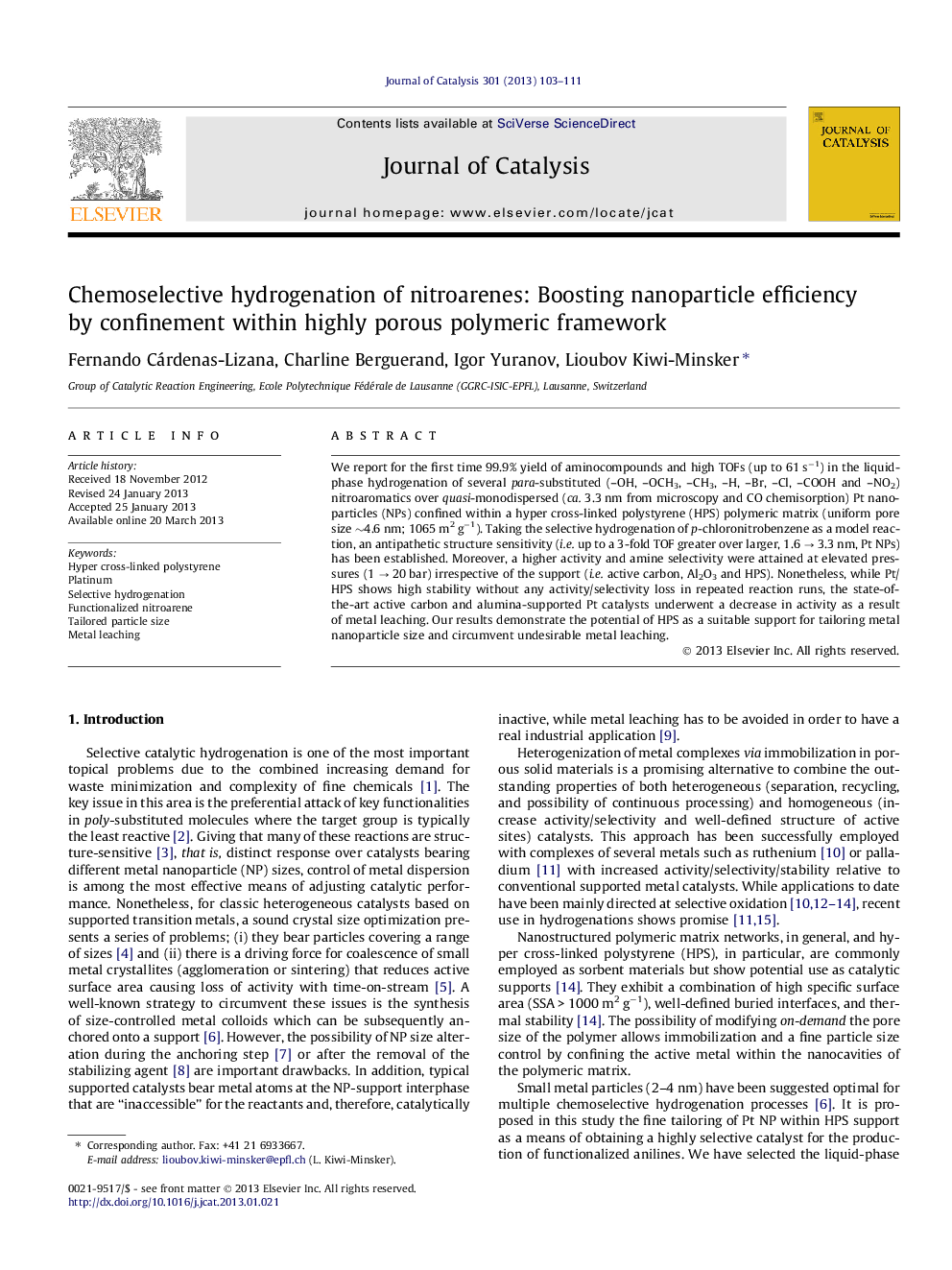| Article ID | Journal | Published Year | Pages | File Type |
|---|---|---|---|---|
| 61283 | Journal of Catalysis | 2013 | 9 Pages |
We report for the first time 99.9% yield of aminocompounds and high TOFs (up to 61 s−1) in the liquid-phase hydrogenation of several para-substituted (–OH, –OCH3, –CH3, –H, –Br, –Cl, –COOH and –NO2) nitroaromatics over quasi-monodispersed (ca. 3.3 nm from microscopy and CO chemisorption) Pt nanoparticles (NPs) confined within a hyper cross-linked polystyrene (HPS) polymeric matrix (uniform pore size ∼4.6 nm; 1065 m2 g−1). Taking the selective hydrogenation of p-chloronitrobenzene as a model reaction, an antipathetic structure sensitivity (i.e. up to a 3-fold TOF greater over larger, 1.6 → 3.3 nm, Pt NPs) has been established. Moreover, a higher activity and amine selectivity were attained at elevated pressures (1 → 20 bar) irrespective of the support (i.e. active carbon, Al2O3 and HPS). Nonetheless, while Pt/HPS shows high stability without any activity/selectivity loss in repeated reaction runs, the state-of-the-art active carbon and alumina-supported Pt catalysts underwent a decrease in activity as a result of metal leaching. Our results demonstrate the potential of HPS as a suitable support for tailoring metal nanoparticle size and circumvent undesirable metal leaching.
Graphical abstractFigure optionsDownload full-size imageDownload high-quality image (175 K)Download as PowerPoint slideHighlights► 99.9% yield to aminocompound in hydrogenation of substituted nitroarenes over Pt/HPS. ► Monodispersed (∼3 nm) Pt0-NPs are confined within the polymer matrix avoiding leaching. ► State-of-the-art Pt catalyst show lower activity, selectivity, and stability relative to Pt/HPS.
